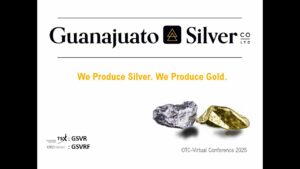Author: Kip Keen
Posted: Sunday , 17 Nov 2013
HERMOSILLO, MEXICO (MINEWEB) –
We’re on the way to AuRico’s 7,500-tonne-per-day El Chanate gold mine north of Hermosillo, Mexico. A couple buses loaded with, for the most part, exploration geologists working projects in northwestern Mexico in the Sonora-Mojave megashear, a large structural corridor that played an important role in making gold ore in the numerous gold deposits of the region.
If it weren’t for a permanent military checkpoint on the highway it would be about a three hour drive to El Chanate, but instead it takes us about five. But who can complain. Pity the transport trucks which form a massive line alongside the road. I lose count as we zip passed them. Reportedly the truck drivers can wait longer than our whole drive up to the mine. This close to the US border as we are, the stop is about catching drug smugglers, though you have to think illegal drugs go around the checkpoint.
The stop is barely an irritation, really, and gives passengers a chance to stretch legs, buy chips and get robbed of 4 pesos to use the bathroom.

In the El Chanate Pit. Left to right David Volkert, Paget Minerals president and CEO, Barry Devlin, VP Exploration Gold Resources, and Bruce Ballantyne, project manager Westminster Resources. Background: Globexplore drillrig crew in midst of punching hole as part of AuRico’s pursuit of ounces at depth.
On the way to El Chanate we pass the rising stacks of rock of Timmins Gold’s San Francisco mine. Among bigger mines, the megashear also holds Fresnillo’s 66-percent owned La Herradura gold mine, which spins out some quarter million ounces gold a year. Newmont owns the other 44 percent and as Jackie Stephens, our geological tour guide, notes it collects some nice-sized cheques. Other nearby operations in the area include Argonaut Gold’s La Colorado gold mine near Hermosillo.
It’s quite a productive region. Riverside Resource’s John-Mark Staude – not on the trip with us – would mention later in a presentation at Mexican Roundup in Hermosillo that the area has yielded some 10 million ounces gold, while another 25 million ounces had been defined. This is one of the reasons the region attracts explorers like Stephens, who points to claims he owns straddling the highway, and Riverside. It’s produced good gold ore from sizeable deposits.
El Chanate is an example of a gold mine that has defied expectations. As a deposit it was overlooked by some who wondered if the low-grade, bulk tonnage operation could make it as a mine. It has. And since going to production about a half decade ago, its reserves and resources have grown significantly. It’s a straightforward open-pit heap-leach operation which as of last year had proven and probable reserves of 56 million tonnes @ 0.67 g/t gold.
OVERLOOKING THE EL CHANATE PIT
Miguel Ramos, AuRico’s Chief Geologists, tells me a new reserve/resource calculation will come out in January and February. To watch for here is the effect on new resources of new gold zones AuRico is defining with some broad higher grade hits – up to 30 to 40 metres wide – with grades between 3 to 4 g/t gold. In some of these new higher grade zones the sulfide count is higher than typical at El Chanate, though. In this respect AuRico will have to test recovery of the material, Ramos says.
AuRico milks El Chanate for all it can. Overall gold recovery is not particularly high: around 60 percent. But then the rock is receptive to leaching otherwise, which keeps cost down. Underscoring the strong leaching, AuRico sends mineralization that grades between 0.17 g/t and 0.25 g/t direct to its pads as run of mine ore. In operating costs for 2013, AuRico forecasts $550 to $600 per ounce gold (or $900-$1,000 all-in) on production in the 70,000 to 80,000 ounce range. As it stands the strip ratio is about 2.3:1, though ultimately based on current reserves Ramos says it will reach 5:1.
Down at the bottom of the pit we see how waste and ore sorting works. After testing unblasted benches, AuRico outlines three categories rock: waste; then ore between 0.17 g/t gold and 0.25 g/t gold that goes direct to the leach pad; and then everything else, which grades above 0.25 g/t. The latter category gets crushed twice down to 3/8 of an inch before going to heap leach pads.
We drive back to Hermosillo after our tour of the bottom of the pit. It’s a shorter drive back. Headed away from the US border, there’s no need to stop at a checkpoint.
In a coming report we’ll be looking at the Sonora-Mojave megashear and exploration in greater depth. But first up will be more reports from the ongoing Mexican Roundup in Hermosillo. Mexico’s new tax is sure to figure.
About Kip Keen

Based in Halifax, Nova Scotia, Kip is Mineweb’s North American junior mining specialist. Before joining Mineweb he worked for Canada’s top mining publication, the Northern Miner covering the junior sector out of Vancouver.
Email: [email protected]
















